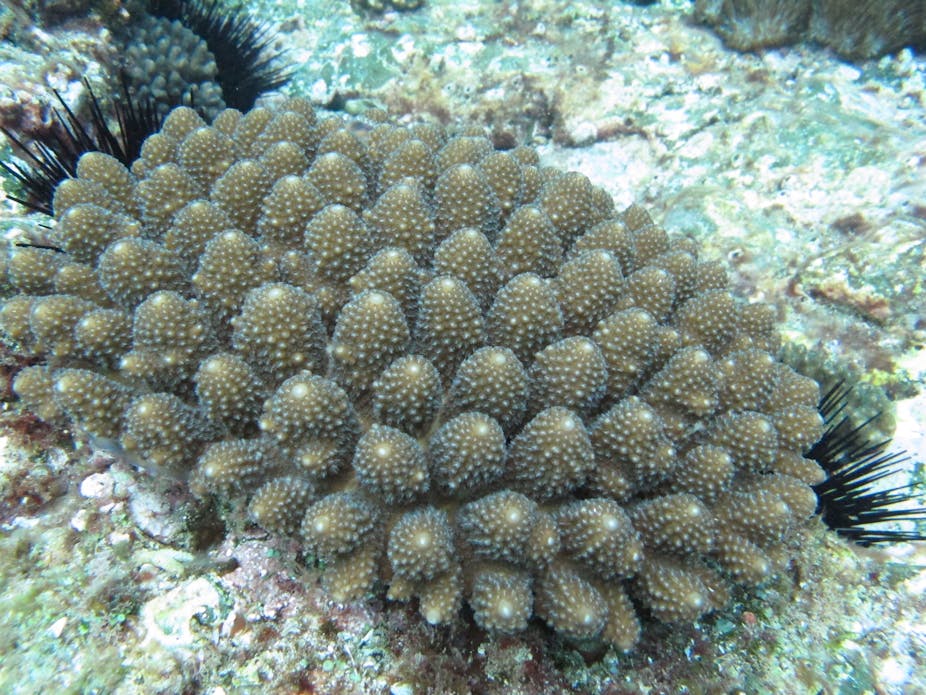The east coast of Australia is a global hotspot for the effects of climate change, especially in the marine realm, where average water temperatures have increased by almost half a degree over the last 50 years.
Half a degree of temperature might seem insignificant to some people, but not to the fish, coral, and other species of the southern Great Barrier Reef, many of whom already live on the edge of their comfort zone.
Over the last ten years, researchers have observed dramatic increases in the number of tropical reef fish species appearing in the more temperate waters of the New South Wales coastline. Some of these fish species can now survive through the winter in NSW waters and have established year-round local populations.
This over-wintering is possible because average winter temperatures in NSW waters have increased by approximately 0.5°C since 1975. However, the average annual water temperatures are still at least 5°C cooler in NSW than on the Great Barrier Reef. It will be decades before NSW waters can be considered tropical, so only hardy fishes are likely to extend their range in the near future.
We have embarked on a three-year project to understand and monitor the southward expansion of reef corals along the south-eastern Australian coastline. The project aims to gather information so that marine resource managers can develop strategies to cope with projected changes in coastal habitats and the likely invasion of tropical species.
The southward expansion of habitat-engineering corals will pave the way for all kinds of associated organisms, such as tropical fishes, snails, and crustaceans. These new arrivals might have important knock-on effects, such as displacing temperate species and changing the make-up of existing marine communities.
The project was motivated by a growing number of corals and other tropical organisms being spotted in the Sydney area by both scientists and members of the general public.
We recently conducted a survey at the Solitary Islands in northern NSW and found four tropical reef-building coral species not reported in previous surveys of the area. These species are large and easy to recognise, and so they were unlikely to have been overlooked in a series of previous surveys dating back as far as the 1970s. The corals in the Solitary Islands are healthy and have yet to experience the bleaching that is happening with greater frequency on tropical reefs.
Furthermore, during the survey, the recreational dive operator who took us to our various field sites suggested that branching Acropora corals, which are a tropical species and had been present in small numbers, have increased in abundance in the last few years.
It may surprise many, but some coral species have always been abundant in NSW waters. For example, Plesiastraea versipora which we are tracking in Sydney Harbour, covers large areas of the harbour floor just off Fairlight Pool. It may not be long before this species is joined by other coral species from further north. Predicting exactly how these new arrivals affect the ecology of the Harbour is one of the aims of our research.

In order to monitor the southward expansion of coral, the project team will set up permanent monitoring sites at a series of locations along the east coast to document existing coral species and the appearance of new ones. We will also conduct experiments to see if the larvae of tropical corals from the Great Barrier Reef can successfully settle and grow in southern environmental conditions.
A website has also been created to harness the observational power of the general public. As well as helping people to identify corals that they see, we are interested in hearing from people who have a favourite snorkeling place and might notice subtle changes in the plants and animals they’re seeing.
The public will be invited to submit any interesting observations to the website, particularly information about species that appear to be new to the area. Information is particularly valuable if accompanied by a photo of the organism and a description of where and when it was seen.
This information will allow the project team to see if there is a species new to the area. Every little bit of information will contribute to the goal of understanding the potential for tropical coral species to expand their ranges southward.

